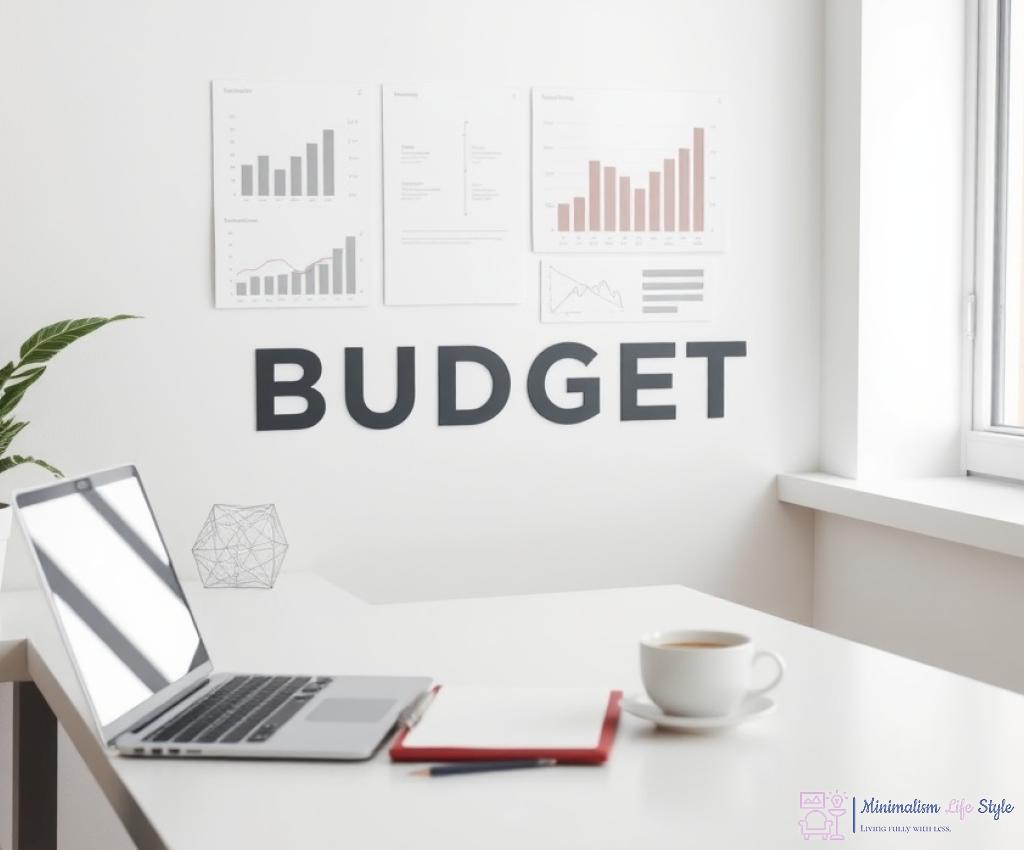Streamline Your Budget: Simple Steps to Clarity

Before you can streamline your budget, it’s essential to take a comprehensive look at your current financial landscape. Understanding where your money comes from and where it goes is the first step toward achieving clarity. This involves digging deep into your income streams, expenses, and existing financial commitments.
Start by gathering all financial statements, invoices, and receipts. Categorizing these items will provide a clearer picture of your financial health. Are you spending more on certain areas than you anticipated? Are there recurring expenses that can be trimmed?
Once you have a firm grasp of your financial landscape, it’s time to set specific budgeting goals. These goals will guide your spending and help you allocate resources more efficiently. Having clear, measurable objectives will not only keep you motivated but also help you evaluate your progress over time.
Consider the following key areas when establishing your goals:
- Reducing unnecessary expenses: Identify areas where you can cut back without sacrificing quality.
- Increasing savings: Set a target percentage of your income to save each month.
- Investing in growth: Allocate a portion of your budget for new opportunities that can expand your business.
In this digital age, numerous tools can help streamline your budgeting process. From software applications to mobile apps, harnessing technology can simplify your financial management and provide real-time insights into your spending habits.
Here are some recommended tools that can help you achieve clarity in your budget:
| Tool Name | Description | Best For |
|---|---|---|
| QuickBooks | A comprehensive accounting software that helps track income and expenses. | Small to medium-sized businesses |
| Mint | A budgeting tool that syncs with your bank accounts to track spending. | Individuals and freelancers |
| YNAB (You Need A Budget) | A proactive budgeting method that encourages you to plan ahead. | Those looking to change their financial habits |
Expense Tracking Made Easy: Tools for Success

As you embark on the journey of decluttering your business finances, one of the most crucial aspects to tackle is expense tracking. In a world where every dollar counts, having a clear understanding of where your money is going can significantly impact your overall financial health. By utilizing effective tools designed for expense tracking, you can achieve a level of clarity that empowers better decision-making and paves the way for streamlined budgeting.
Choosing the right tools can make a significant difference in your ability to monitor and manage expenses effortlessly. With a plethora of options available, it’s important to consider the features that align with your specific needs. For instance, look for tools that integrate seamlessly with your existing financial systems, offering real-time updates and analytics that keep you informed at all times. This not only enhances your ability to track expenses but also allows for proactive adjustments to your budget.
When it comes to expense tracking, smart solutions can transform the way you handle your finances. From mobile apps to comprehensive software platforms, the right tools can provide a user-friendly interface for monitoring expenditures. One standout option is Expensify, which allows users to snap photos of receipts, categorize expenses, and generate expense reports with ease. This not only saves time but also minimizes the risk of losing track of small purchases that can add up over time.
Another noteworthy tool is Zoho Books, which offers robust features for tracking expenses, invoicing, and managing your finances all in one place. By adopting such tools, you can automate tedious processes, freeing up valuable time for more strategic initiatives.
The power of data cannot be underestimated when it comes to expense tracking. Tools that provide in-depth analytics and visual representations of spending patterns can be game-changers for your budgeting strategy. For example, Tableau delivers powerful data visualization capabilities that allow you to see trends in your expenses, helping you identify areas where you may be overspending or could optimize your budget.
Utilizing these insights not only enhances transparency but also equips you with the knowledge needed to make informed financial decisions. By regularly reviewing your expense reports and analytics, you can adjust your spending habits and set more realistic budget goals that align with your business objectives.
| Tool Name | Main Features | Best For |
|---|---|---|
| Expensify | Receipt scanning, expense categorization, reporting | Businesses needing quick expense management |
| Zoho Books | Expense tracking, invoicing, project management | Small to medium-sized enterprises |
| Tableau | Data visualization, trend analysis, reporting | Businesses looking for deep analytical insights |
Identify and Eliminate Waste: Boost Your Bottom Line
In the intricate tapestry of business operations, waste can often lurk in the shadows. Identifying these inefficiencies is not merely a task but a strategic endeavor that can lead to significant cost savings and enhanced profitability. To embark on this journey, businesses must first conduct a thorough audit of their expenses. This process involves examining every line item in your budget, from operational costs to discretionary spending. By categorizing expenses, you can pinpoint areas where resources are being misallocated or underutilized.
Once you’ve identified wasteful spending, the next step is to implement strategic cuts. However, this is not about slashing budgets indiscriminately; it’s about making informed decisions. Consider leveraging data analytics to assess the impact of each expense on your overall profitability. Are there subscriptions that have gone unused? Or perhaps suppliers who no longer offer competitive pricing? Eliminating these unnecessary costs can free up funds that can be redirected towards more productive initiatives. Furthermore, engaging your team in this process can yield valuable insights, as they often have a firsthand understanding of operational inefficiencies that may otherwise go unnoticed.
Identifying and eliminating waste should not be a one-time event, but rather a part of your company’s culture. By fostering a culture of continuous improvement, you encourage your team to remain vigilant and proactive in seeking out inefficiencies. This can be achieved through regular training sessions that emphasize the importance of cost management and resource optimization. Additionally, implementing feedback loops allows employees to share their ideas for improvement, which can lead to innovative solutions and enhance overall operational effectiveness. In this way, your business not only benefits from immediate cost reductions but also positions itself for sustainable growth in the long run.
Building a Flexible Budget: Adapting to Change
In an ever-evolving business landscape, the ability to adapt is vital. A flexible budget serves as a dynamic tool that allows companies to respond to unforeseen changes, whether they stem from market fluctuations, economic shifts, or internal developments. Creating a budget that can bend without breaking is essential for maintaining financial stability and achieving long-term goals.
One of the key aspects of building a flexible budget is understanding the difference between fixed and variable costs. Fixed costs, such as rent and salaries, remain constant regardless of business performance, whereas variable costs fluctuate based on production levels and sales. By identifying these costs, businesses can create a budget that adjusts in real-time to reflect changing circumstances, ensuring that resources are allocated efficiently.
Incorporating dynamic forecasting into your budgeting process can significantly enhance your ability to adapt. This involves regularly updating your budget based on the latest financial data and market trends. Utilizing tools like spreadsheets or budgeting software can facilitate this process by allowing for quick adjustments and real-time reporting. For instance, if a new competitor enters the market, a dynamic budget enables you to quickly reallocate funds toward marketing efforts to maintain your competitive edge.
Moreover, engaging in what-if analysis can prepare your business for various scenarios. By modeling potential changes in revenue or expenses, you can see how these shifts impact your overall budget. This proactive approach not only prepares your organization for the unexpected but also empowers decision-makers to act confidently during uncertain times.
Establishing a routine for continuous budget review is paramount. Regularly revisiting your budget allows you to analyze actual performance against your projections. This practice not only highlights discrepancies but also provides insights into spending patterns and areas that require adjustments. For example, if you notice that certain departments consistently exceed their budgets, it may be time to assess their spending habits and implement stricter controls.
Additionally, fostering communication across departments is crucial in maintaining a flexible budgeting approach. Encouraging team leaders to share their insights and challenges can lead to collaborative solutions that benefit the entire organization. By doing so, you cultivate a culture of transparency and adaptability, where all employees understand the importance of aligning their spending with the overall financial strategy.
Financial Planning for Growth: Preparing for the Future
As businesses navigate the complexities of today’s financial landscape, preparing for growth becomes paramount. A proactive financial planning strategy not only helps in managing current expenses but also paves the way for future opportunities. This requires a shift in mindset from merely surviving in the market to actively seeking avenues for expansion and innovation. By embracing this growth-focused approach, businesses can align their financial strategies with their aspirations, ensuring they are prepared to seize new opportunities as they arise.
In order to fuel growth, it is crucial to identify and prioritize strategic investments that can enhance your operational capabilities. This involves a thorough analysis of potential areas for expansion, whether it be through new technology, market penetration, or product development. By allocating resources strategically, businesses can position themselves to capitalize on emerging trends and meet customer demands effectively.
Consider the following key areas when planning for growth:
- Market Research: Understand the evolving needs of your target audience and identify potential gaps in the market.
- Technology Adoption: Invest in tools and systems that can streamline operations and enhance productivity.
- Talent Development: Focus on recruiting and training skilled personnel who can drive innovation within your organization.
- Financial Reserves: Maintain a healthy cash flow and build reserves that can be tapped into during expansion phases.
Once you’ve set your growth strategy in motion, the next step is to continuously monitor performance and adjust your financial plans accordingly. This involves regular reviews of financial metrics and KPIs to ensure that your investments are yielding desired results. By remaining agile and responsive, businesses can make informed decisions that align with their growth objectives.
Moreover, establishing a feedback mechanism allows for the incorporation of insights from various departments, fostering a culture of collaboration. When every team member understands their role in the financial health of the organization, they contribute to a cohesive strategy that drives sustainable growth.




